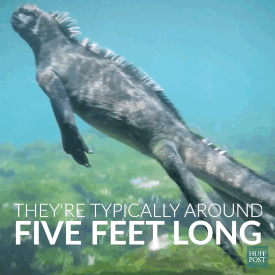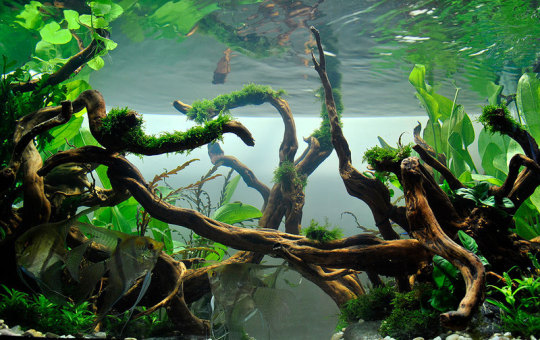Text
Lucky Lapine anyone?
Does anyone here play lucky lapine? I've been looking into joining but I haven't found anyone with invite codes. I'd love to chat with anyone who plays!
5 notes
·
View notes
Photo
Anyone know where I can get an invite to this amazing site? I had one long ago but I don't remember my username!

*rebels against proper breed posing* Rough sketch and less-rough sketch of the Mini Rex for the Lucky Lapine game. Toying around with it. P:
28 notes
·
View notes
Text
Also, while this is on my mind. In my master’s-level food toxicology class today we discussed various genetically modified crops and watched part of a documentary about them, and as someone with a food science degree I would like to be clear about the following:
The only health risk that has been shown to us throughout twenty plus years of having genetically modified crops as part of the food system is that there is a possibility of introducing proteins that could cause allergic reactions. New strains are required to be tested for this, of course, but that is a practical risk that needs to be closely monitored.
The objection to GM in general should be the patenting of genes and other legal matters; there are a number of crops that have been saved from blight and overall extinction via modification in the past two decades, and much like putting up inaccessibly expensive paywalls to scientific journals, patenting of genes within crops limits our ability within universities, small research companies, etc to make significant breakthroughs to further the scientific progress of humanity.
Furthermore. People think of organic crops as the environmentally-friendly option. If you believe this, please pay attention to what I’m about to say. Current regulations dictate that to have a crop classified as organic the land on which the crop is grown has to have been pesticide-free for a significant amount of time. There is no interim label available to farmers. So what do they do? Do they use no pesticides and take the losses from disease and insects for a decade, waiting for a time in which they are allowed to reclassify their crops in such a way that they can sell them for more money?
Of course they don’t. It isn’t practical. You can say what you like about how the system is structured; I’d personally like to see an interim classification come into play. But what farmers actually do, and states like Montana are feeling the full effects of this–they clear-cut forests and plant their organic crops on entirely new land.
You want to tell me that clear-cutting forests is environmentally friendly? It’s not. Hell, for all that people make a big deal about saving the environment by limiting how much paper they use, paper production is done in a more sustainable manner (because the paper farms replant their trees in a regular cycle so as to not deplete their sources; they don’t just go out and cut down random trees).
There are objections to be had in regards to GM crops on a legal basis. On a scientific one, there isn’t much. Call them frankenfoods all you want; look up what most commercially-sold produce truly looks like in the wild with no modification and you will learn very quickly that all foods have been modified in some way over the years through conventional breeding. We just think of that differently.
Biotechnology is not the enemy. Pseudoscience tells us that this is the case. Pseudoscience also tells us that we should seek out natural supplements instead of medicine, and, well… that’s a rant for another day, but suffice to say it’s an even more dubious proposition.
Don’t buy into it.
9K notes
·
View notes
Photo
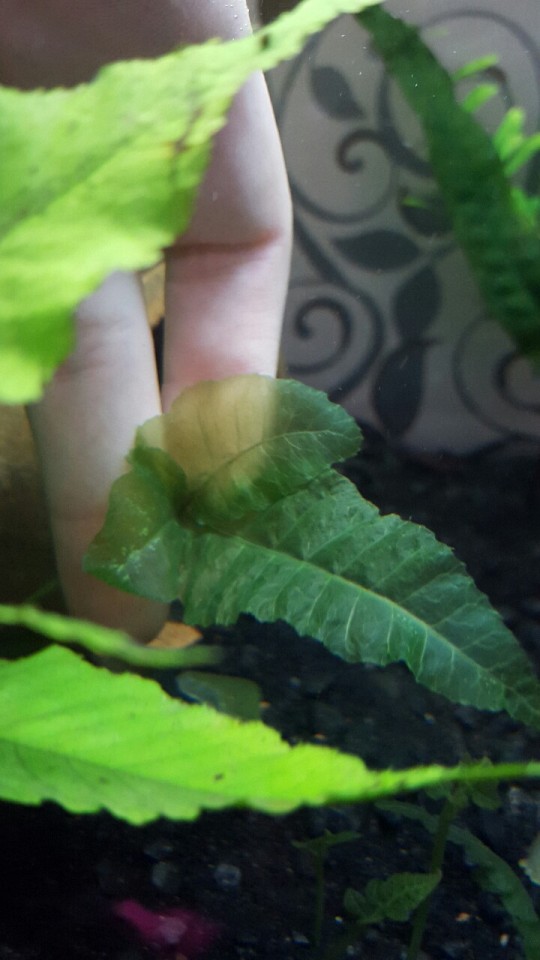
Another pic of that mysterious plant growing in my tank. A bigger one this time
0 notes
Photo

My baby flaring at his reflection
15 notes
·
View notes
Photo

New fish! His Lordship Denim, Duke of Daisy. The glass is a little dirty on the outside, oops!
47 notes
·
View notes
Photo
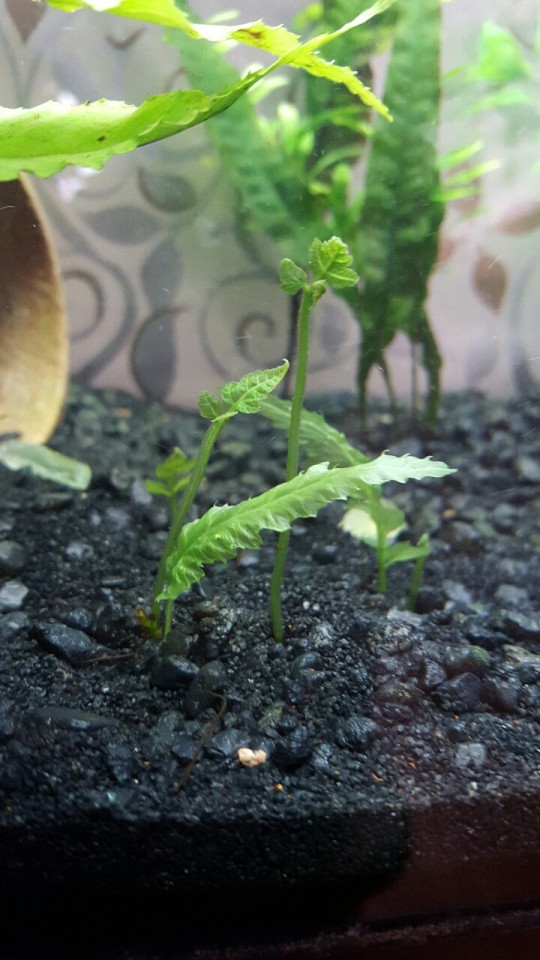

Anyone know what these plants are? They started growing on the plants I got online from some old roots. I picked off a few and planted them in substrate, but I'd love to know what they are.
0 notes
Text
Hot or Not? Big Cat Sanctuary Edition

(Photo Credit: bigcatawareness)
There are far too many “cute” big cat videos and vines and gifs trolling around here for us to reblog and critique every single one - and in most of them, it’s also important to have context about the facility it comes from and their policies for working with their animals. And as always, informed consumerism should always play a big part in what and how you decide to share animal media.
To help everyone out we’re creating a masterpost of the pertinent issues to be aware of with big cat sanctuaries and rescues, and some information on how the most well-known facilities stack up. Most of it is sourced from bigcatawareness, who has professional experience working around large cats at a responsible facility. If you want more information on any facility or topic, clickthrough links in the next will lead to her tags.
Big Cat Issues:
White Tigers
All white tigers can be traced back to a single stud male named Mohan, who was caught as a cub in India in the 1950′s. (It’s notable he was caught as a cub. Leucistic animals rarely survive to adulthood because their coloring makes them so vulnerable).
ALL white tigers are severely inbred. When Mohan’s cubs all turned out normal orange, he was bred with one of his daughters in order to get the double recessive gene that turns fur white and eyes blue.
There are no other verified strains of white tiger genetic material in captive populations, only unquantifiable rumors.
A white tiger being born naturally has a 1-in-10,000 chance of happening, so the chance that it will happen again without any inbreeding is basically nil.
Most mothers will smother white/abnormally pigmented cubs if given the chance, both in the wild and in captivity. This is because they’re so vulnerable that they’re not worth the energy investment to nurse and raise because they’re almost guaranteed to die.
The inbreeding that has kept multiple generations white basically has crippled all white tigers. They suffer from bone deformation, cleft palates, scoliosis, issues with mental retardation (no, they do not have Downs syndrome), crossed eyes, and many other problems. This affects all white tigers. There is no such thing as a healthy white tiger. Period.
AZA accredited zoos are banned from breeding white tigers because it is considered cruel. If there is one in the collection is is only and always a rescue.
Ligers, Lililigers and Other Hybrids
Ligers originally occurred when zoos in the early 1900′s didn’t care about separating lions and tigers in their exotic cat exhibits.
Ligers are not natural. The cats live on different continents and would not ever interact. (But they can breed, you say. All cats, large and domestic, can produce fertile embryos. Yes, you can implant clouded leopard sperm in a domestic cat egg. It will not live to term or survive birth, but it’s fertile and horribly unethical so it’s just. not. done.)
Females suffer major problems during birth and often must undergo a C-section due to the size of liger cubs. There are a number of documented incidents where the mother died during the delivery. Cubs usually die young from birth defects.
Ligers are incredibly unhealthy. They lack both copies of the growth inhibitor genes that big cat cubs inherent - one from each parent. It’s carried in females for lions and males for tigers, so in liger pairings, the embryo gets none. This means they’re literally too big for their bodies. They often suffer genetic abnormalities (and are sometimes born with incomplete DNA), neurological problems, metabolic bone disease, and arthritis among other health complications.
These animals do not need to be ‘conserved’ because they do not exist in the wild. Their breeding in banned in reputable institutions because it is considered cruel.
Cub Petting and Pay to Play
Breeders who bring cubs to public venues and charge money for photos with cubs or touching them frequently lie to customers; that they’re “rescues” and operate “sanctuaries”; that the cubs have a good quality of life on the road; that they “enjoy” being handled by dozens of people a day; that various random things “calm” or “reset” the cubs; that it’s safe for the cubs or even legal to handle them as young as weeks old; that breeding cubs for people to handle provides the sole monetary support for the care of the adults; that the cubs will have good homes when they grow up.
True rescues and sanctuaries do. not. breed. Period. No real responsible organization will have cubs except on accident.
The Global Federation of Animal Sanctuaries sets the world standard for animal care and practices, and facilities that breed and take animals around on exhibit are immediately disqualified from belonging to the organization.
Cubs used for petting are torn from their mothers shortly after birth, disrupting natural bonding and imprinting behaviors that effect them the rest of their lives as well as causing the mother severe distress.
Cubs used for petting do not get to do anything natural to tiger cubs because they are locked in a tiny, loud cage and repeatedly awakened. They cannot roam, play, explore, learn from their mother, or sleep for prolonged period of times (something all babies need).
Exhibitors restrain cubs when they’re unwilling to interact with people, using punishment such as blowing in their faces, dangling the babies by their limbs and tossing them in the air. They lie and say this calms them, but the animal instead stops struggling hoping the punishment will end.
Severely sick cubs are still kept on display, even with diarrhea and obvious sores.
Cubs are often available for interaction much younger and much older than is legal. USDA regulations only allow cubs to interact with the public between 8-12 weeks, book-ended by their first set of injections and when they get big enough to become dangerous. Many exhibitors freely admit cubs are well under 8 weeks old, or as old as 5-7 months.
There is no reason to breed and exploit cubs to support other animals. If a facility doesn’t have the funds to care for the animals they have, they shouldn’t have them - much less create more.
Paying to pet tigers does jack shit to support conservation in the wild. The money does not go back to any conservation fund - it goes straight into the pockets of the exhibitors. In fact, untracked tigers (not part of the species protection program run through AZA, as most exhibition tigers are) are thought to contribute heavily to the black market trade for tiger parts.
Petting cubs gives people the impression that tigers make cuddly pets, which leads to more abusive situations and human and animal injuries and deaths.
Declawing:
Declawing does not just remove the claw - it removes an entire segment of toe. Declawing a cat is like cutting off your finger at the last knuckle.
Declawing leaves cats in pain forever. Chronic and lingering pain are well known side-effects of declawing in both domestic and big cats. They will often have an aversion to touching things with their feet and will frequently shake them like they’re in pain.
Because cats walk digitigrade (on their toes), declawing forever forces the cat to walk on the sites of amputations. In some cats the tendons are so badly damaged they can’t walk on their paws anymore and walk on their “wrists” and heels.
Okay, on to the sanctuaries (or psuedo-sanctuaries).
Big Cat Facilities:
Big Cat Rescue - Grade: A plus

(photo credit: BCR facebook page)
100% open about history starting off as a shady “rescue” and their journey to being the place they are today. They openly acknowledge they used to keep cats as exotic pets, and breed and buy animals, but stopped in the late 90′s. Currently only 20 or so of their animals (out of 85+) were bought or bred, most of which were bobcats bought from fur farms in 90′s in order to save them from being killed for their pelt.
No direct contact with cats, period, unless medically necessary. Period. Staff do not ever go into enclosures, even to clean (most zoos shift cats into back areas for this). Instead staff work through fences with long tools.
All animals are spayed and neutered, no intentional breeding.
Cats that lived together well previously are kept together whenever possible.
Directly involved in pushing legislation to reduce animal cruelty as well as encouraging airlines to stop transporting hunting trophies, end the private possession of big cats, fighting big cat circus exemptions and hunting bills, and banning cub petting schemes.
Shares videos/vines showcasing wild behavior on the part of the cats, including aggression and predatory behavior.
Care Rescue Texas (Big Cat Derek) - Grade: A minus

(photo credit: Care Rescue Texas, Mwali’s page)
Good quality husbandry
Staff never go into the enclosures with the animals
Social media stresses that the cats are wild and dangerous, although some recent videos tend more towards the ‘cute’ factor of cub interaction without quite enough context.
Two lions were recently bred, which is iffy for a good sanctuary.
Cubs are hand-raised when necessary, and even though recently it seemed like they pulled contact later than most facilities consider appropriate, it was explained that it was done in the cubs’ best interest because they had motor problems and needed extra staff help.
Does not participate in petting schemes.
Black Jaguar White Tiger - Grade: C minus

(Photo credit: bigcatawareness)
Allows celebrities/guests to take photos free-contact with adult cats and cubs
Declaws adult cats upon obtaining them
Staff frequently interact with animals free-contact and pet the cubs far past what is reasonable for hand-raising
Purposefully breeds cats at the facility.
T.I.G.E.R.S. - Grade: D minus

(Photo credit: The Daily Mail)
Breeds white tigers, white lions, ligers, white ligers and more unhealthy cats (the white liger cubs were never mentioned again after their birth announcement, which makes it likely none of them survived).
Bills ligers as a novelty with no mention of their health problems.
Allows pay to play.
Many of the cubs in pay to play schemes are too young and appear sick.
Keeps cubs on a nutritionally deficient diet to keep them small and cuddly longer, leading to severely underdeveloped bones and muscles.
Purposefully sets up mixed species interactions (orangutan and tiger cubs) specifically for advertisement and profit.
Represents themselves as a sanctuary and dedicated to conservation while purposefully breeding excess and inbred cubs.
Lies about the genetic status of white tigers and other color morphs, calling them ‘endangered subspecies’ rather than ‘inbred’.
Have absolutely stupid requirements for apprentices, such as restricting medication/processed sugar/palm oil, requiring a vegetarian diet, forbidding romantic or familial relationships during the apprenticeship, and forcing applicants to watch movie like Kill Bill and the Devil Wears Prada and be able to discuss them in depth at a moment’s notice. No, really.
Tiger Temple - Grade: F

(Photo Credit: Reuters)
Downplays the ‘wild’ nature of tigers after a staff member is mauled.
Cats are fed a totally inappropriate diet, such as noodles, milk, and boiled chicken for both adults and cubs.
Cats are chained in one spot all day, often without easy access to shade, food, or water.
Allows guests free contact with adult cats.
Terminally sick or suffering cats are not euthanized due to religious beliefs.
Have far too few adult cats for the number of cubs bred each year - cubs disappear under suspicious and unexplained circumstances.
LITERALLY SUPPLIES THE BLACK MARKET ANIMAL TRADE FOR TIGER PARTS
Tiger Kingdom - Grade: F

(Photo credit: Unknown. Submitted to bigcatawareness by mr-repulsive)
Breeds white tigers.
Feeds cats a poor diet.
Allegedly drugs adult animals.
Allows guests free contact with adult cats and reopened the petting section even after an Australian tourist was mauled.
Guests are allowed to lay on/ cuddle with/ pull the tails of the adult tigers.
Animal live in tiny cages when not being harassed by visitors.
4K notes
·
View notes
Text
I use Carefresh, and I don’t bed the whole”hutch.” The bottom of my bunny’s living area is lined with towels for traction and she burrows in a box full of tissue paper.
I’m curious – what do you bunny parents use for litter? I’ve been experimenting and haven’t found one I like yet.
Also – where are you on the bedding vs no bedding in the hutch debate?
3 notes
·
View notes
Note
You..you do know that apes aren’t vean, right? They’re not even vegetarian. They eat meat and insects as often as possible.
Since I think that I am spiritually and physically a human, does that mean that I can be an omnivore?
no. human digestive tracts are more like apes, which eat a vegan diet. they’re not short like lions and wolves, which are meant to eat meat. so no, you can’t. thanks for asking though.
11 notes
·
View notes
Text
More Bad Luck?
Looks like the new fish, Pugs, may also be pretty damn sick.
He looked lively at the store but he looks pretty bad now and I know it's not my fault. He's been refusing food and he's floating rather awkwardly at the surface. I wish I could get healthy fish. :C
0 notes
Photo
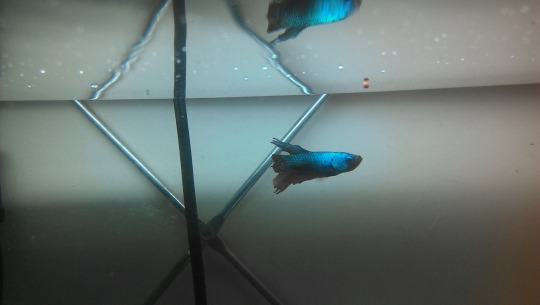


Meet Pontos!
I got this poor baby from my sister, who's other betta showed Pontos who's boss when he somehow slipped around a tank divider. He's healing well now, and although he can be a little sluggish sometimes, he's still a delight.
He is very hard to photograph, however, which is why the pictures are so much worse than Pug's pics!
0 notes
Photo



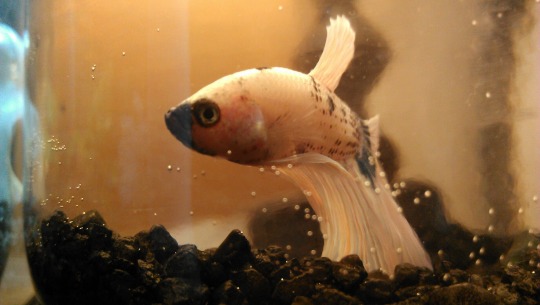
Meet Pug!
Pugsley is quite the cutie, and is extremely friendly and outgoing. He LOVES being photographed, but my camera always has trouble focusing when he sticks his fat face into the lens.
He's active and playful, and swims up to say hello when someone gets near the glass!
0 notes



